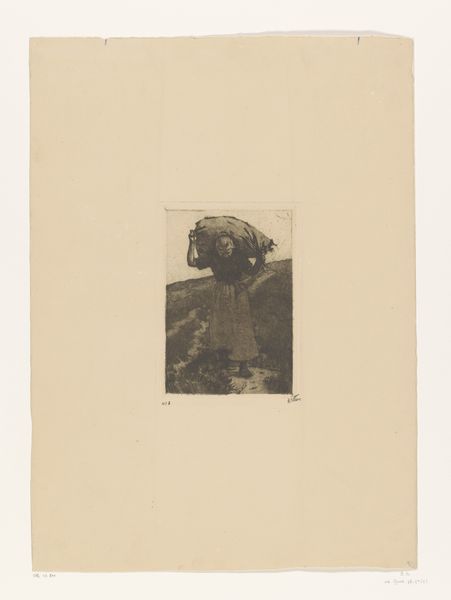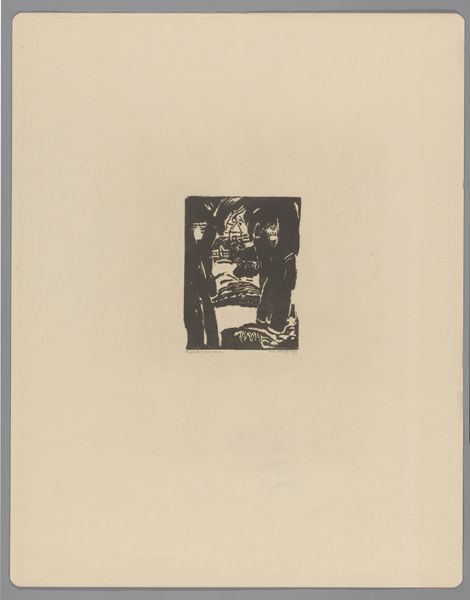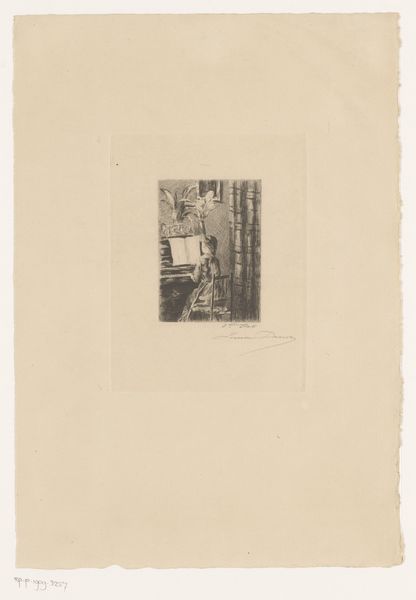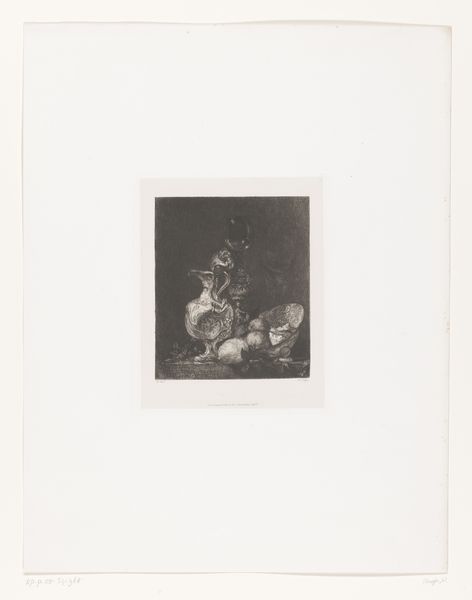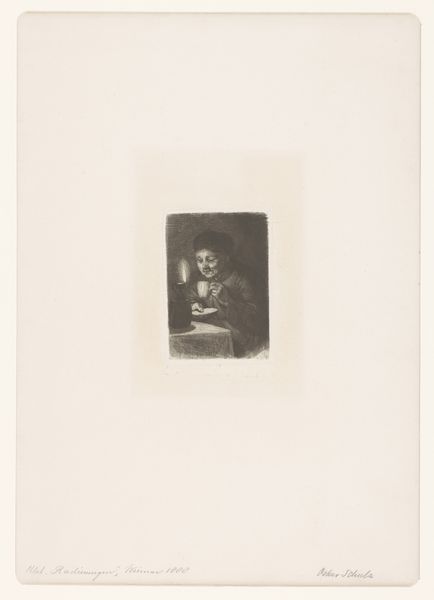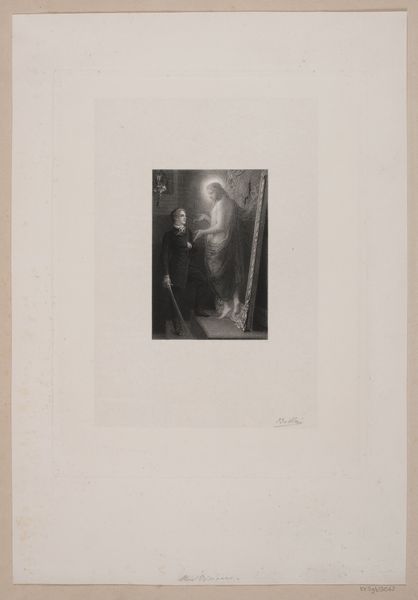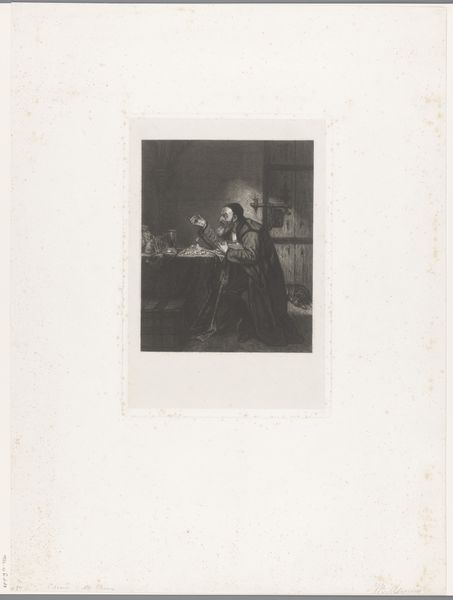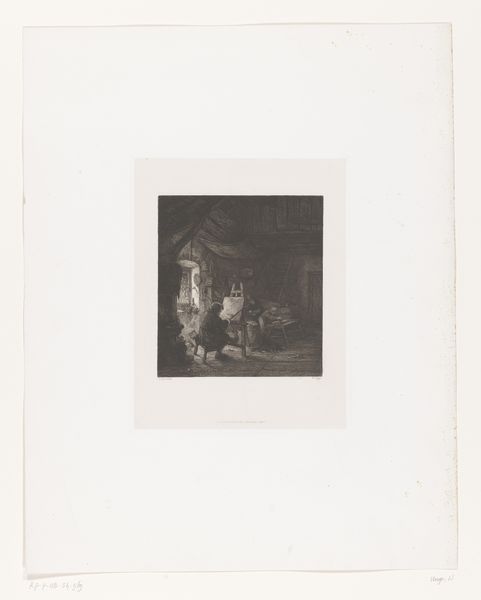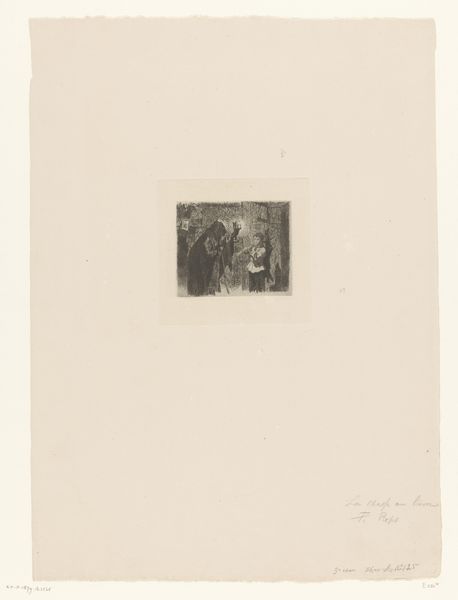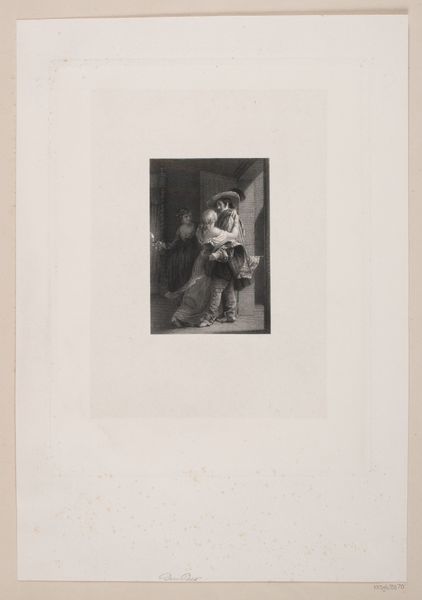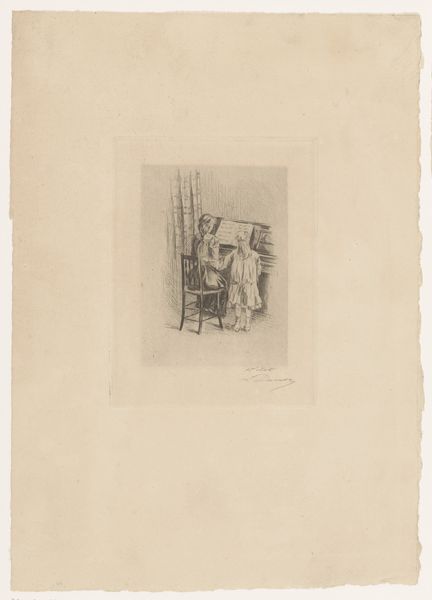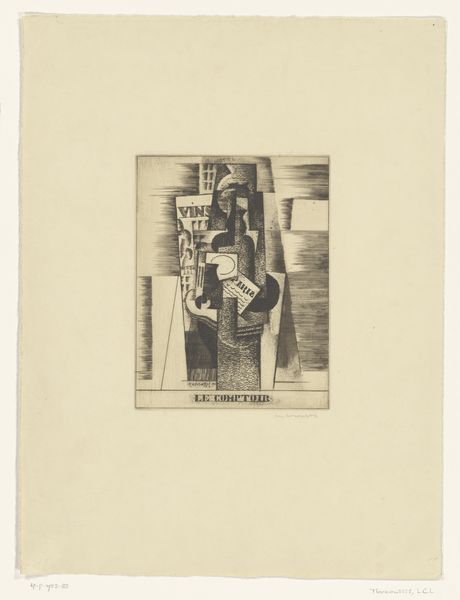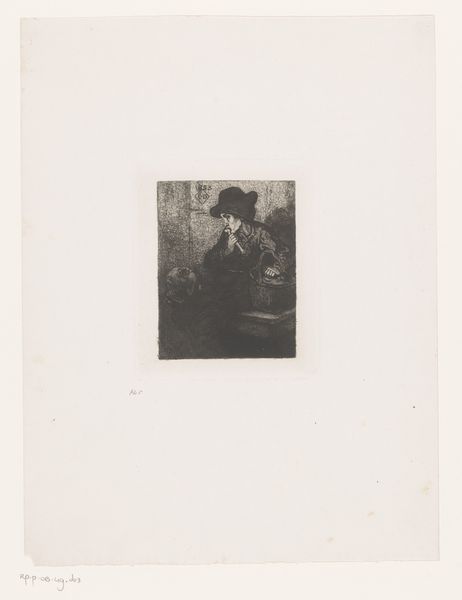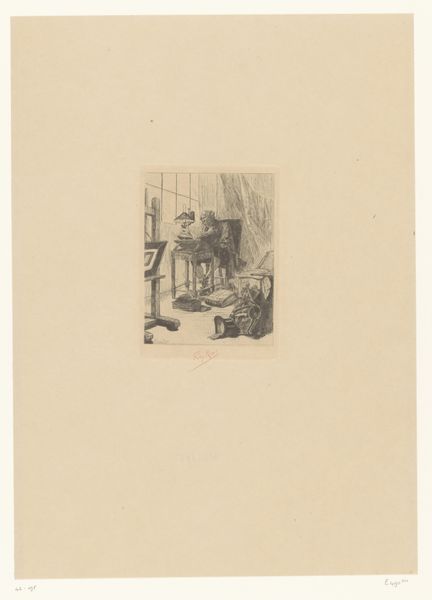
print, engraving
# print
#
genre-painting
#
engraving
#
realism
Dimensions: height 382 mm, width 282 mm
Copyright: Rijks Museum: Open Domain
Curator: Here we have "Tafelgebed," or "Table Prayer," an engraving by Johann Leonhard Raab, dating from the latter half of the 19th century. Editor: My immediate impression is one of quiet solemnity. The somber tones evoke a sense of contemplation and perhaps even the hardships of the time. The overall composition has a stark feeling, doesn’t it? Curator: Absolutely. The scene depicts an elderly man, presumably at prayer before a simple meal. Consider the sociopolitical backdrop—realism emerged, in part, to address the rapid societal changes and class tensions arising from industrialization. This image seems to present a quiet dignity amid hardship. Editor: Yes, I see it in the symbolism. Note the prayer itself. In the context of poverty, giving thanks resonates powerfully, illustrating inner values during struggle. What catches my eye, though, is the visual weight of the spinning wheel looming in the shadows. What stories might it tell of the domestic industry and the people connected with this humble place? Curator: The spinning wheel definitely represents labor, perhaps the burden placed disproportionately on certain demographics. But even the presence of animals in the image could symbolize domesticity and interconnectedness. Look at the objects surrounding the man and how they represent everyday activities that constitute lived realities for much of the population. Editor: I also see strong elements of realism. There are windows allowing soft light, crucifixes hinting towards redemption through spirituality, and even what seems to be an abandoned, tattered coat handing on a hook nearby. The artist captures details that symbolize a life intertwined with spiritual solace and the simplicity of life, perhaps meant to evoke deep empathy within us. Curator: It's important to not ignore that an artwork like this could be seen as potentially didactic—it might subtly advocate certain behaviors or values, particularly religious devotion, to an audience perhaps caught up in rapid societal changes. I wonder about the reception it received when it was first created, at a time when people might be questioning traditional values. Editor: I find it compelling to think about visual memory in this image. Centuries after its creation, its somber tones can still touch us. Seeing how people visually presented piety allows one to recognize the endurance and modification of cultural practices across time. Curator: In looking at it from a modern viewpoint, I can see this artwork urging questions regarding religious identity, class structures, and labor, topics as essential now as they were then. Editor: Yes, it does seem Johann Raab left us much to consider. I’ll keep thinking about how an artist can create emotional resonance with the help of objects within our lives that echo far beyond their era.
Comments
No comments
Be the first to comment and join the conversation on the ultimate creative platform.
